Sensory-friendly experience in Sacramento opens door to world of ballet. Here’s how they did it
The last time Sahana Rajaraman saw a production at a performing arts theater, she was on a kindergarten field trip. Krithika Rajaraman said her daughter, who is on the autism spectrum, struggled to sit still and couldn’t comprehend the show.
“I had to go with her as an escort,” Rajaraman said. “That was the only theater experience she had had.”
Traditional performing arts theaters can be an uncomfortable experience for younger children. Anxiety-inducing dark rooms that are unfamiliar, music that can be ominous or suddenly loud and strict rules that require spectators to sit still in their seats make the two- to three-hour performances all the more difficult for children on the spectrum.
“Sensory Friendly Dance performances get rid of all those barriers,” said Dr. Maya Evans, a specialist in physical medicine and rehabilitation who works at Shriners Hospitals for Children Northern California and with UC Davis Children’s Hospital.
Autism spectrum disorder diagnoses grew about 400% in California from 2003 to 2017, according to the California Department of Developmental Services, an increase that was seen “primarily in children.”
Parents say performing arts spaces are one of the places that are difficult to navigate for children on the spectrum. Productions hosted through Sensory Friendly Dance, however, shake off theater traditions to create a safe space for a more neurodivergent audience.
The group’s original production, “Tanabata — The Story of Orihime & Hikoboshi,” will be performed at 1 p.m. Saturday at the B Street Theatre. Tickets are $5 each and available on the B Street Theatre’s website.
The ballet takes the Japanese tale celebrating the annual Star Festival and brings it to life — focusing less on technically-advanced ballet steps and more on animated movements that helps children to follow along, said Kaori Higashiyama, the show’s choreographer.
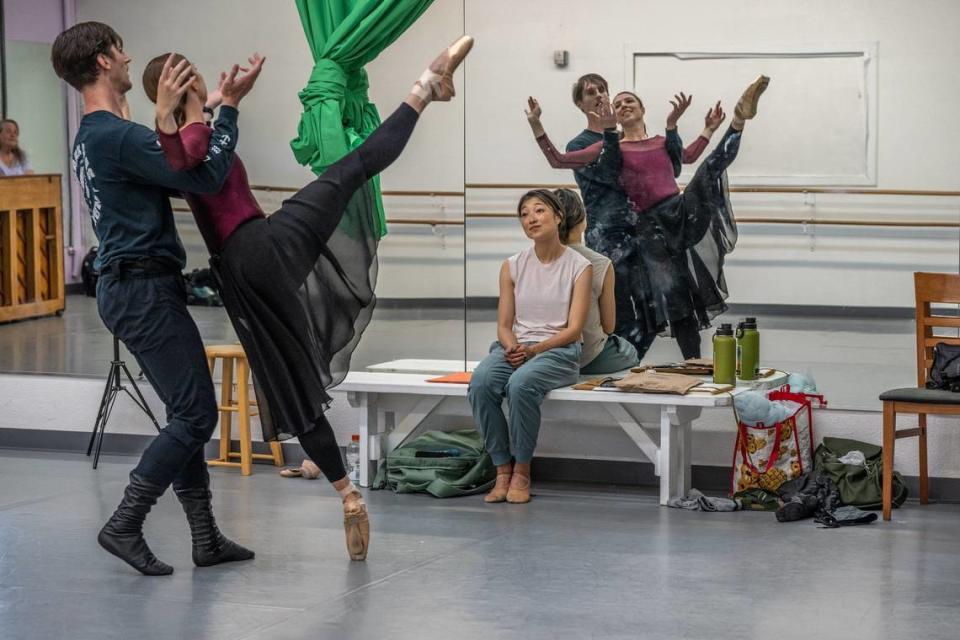
Sensory Friendly Dance performances are reduced to 30 to 40 minutes in length to compensate for shorter attention spans, and a break room is provided for children who need to move around. Fidget toys are allotted for the children to play with during the show and noise-reducing headphones are distributed as needed.
Parents love it.
“We didn’t have to be cautious, we didn’t have to be over-prepared,” Rajaraman said, recalling when she and her daughter saw the group’s performance of “Peter Rabbit” last year. “We were able to actually enjoy the show, you know?”
Those on the spectrum have difficulty comprehending plots and story lines. Exaggerated movements and acting, along with a narrator there to explain the plot, help these audience members understand the story.
“Sometimes it’s really hard on kids. That’s what I really loved about Sensory Friendly Dance, being very understanding and inclusive,” Rajaraman said.
She appreciated how good the performance was, with animated movements and dramatic facial expressions, since her daughter has “comprehension issues and needs some time to understand what’s happening.”
“We all loved the scarecrow, it was really funny,” Rajaraman said, laughing.
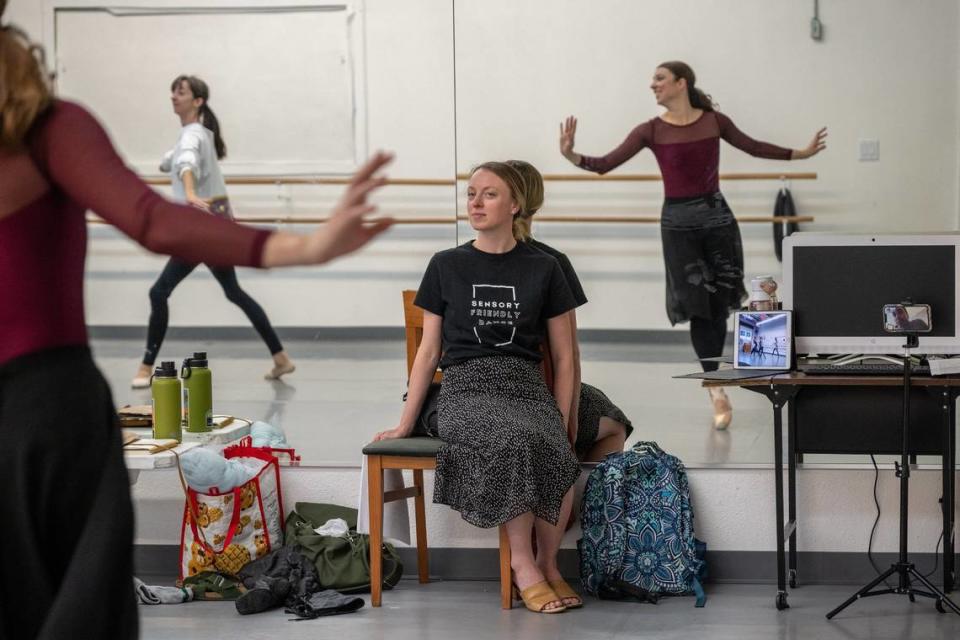
Alexandra Cunningham, a former principal dancer for the Sacramento Ballet, created the program seven years ago.
As part of her undergrad research at UC Berkeley, Cunningham discovered that the Sacramento community lacked sensory-friendly theater productions and enlisted help from her colleagues at Capital Dance Project, a dancer-run company dedicated to making the performing arts more accessible in the Sacramento region.
“It was something that I was noticing popping up in other programming and other ballet companies across the country,” Cunningham said. “We just didn’t really have it here.”
Cunningham and others began to reach out across the country for ways to jump-start the project, starting with Houston Ballet.
The Texas-based ballet company has its own program, Sensory-Friendly Performances, which are ballet productions “modified for audience members with neurological differences,” according to Houston Ballet’s website. Cunningham employed some of Houston’s techniques to create performances for a neurodivergent audience.
‘It’s a continual learning process,” Cunningham said.
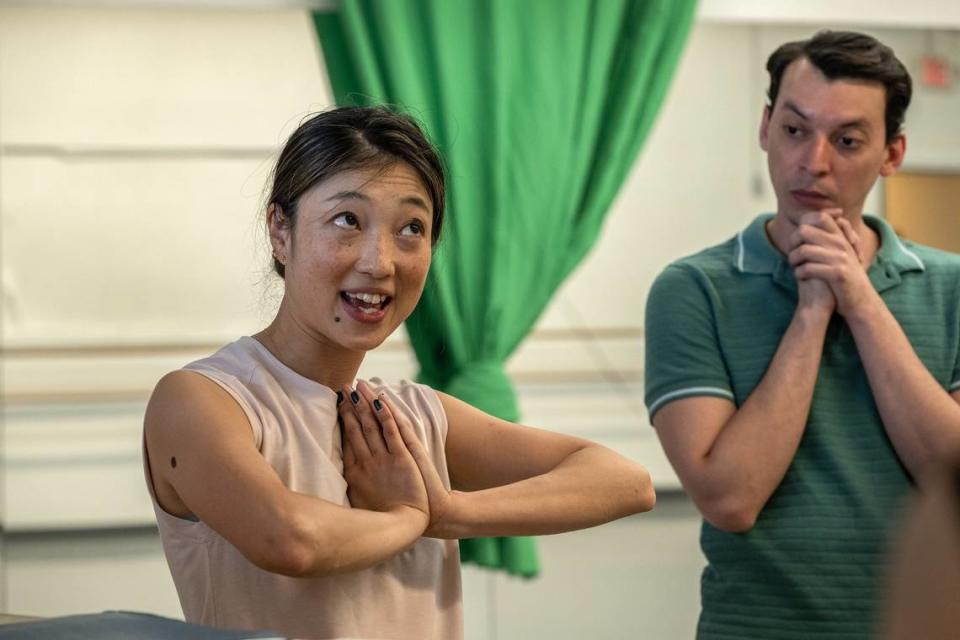
The Sacramento program sought help from mental health professionals such as KultureCity, a nonprofit organization that specializes in sensory accessibility. KultureCity sent behavioral therapists and support staff to train Cunningham’s team on how to design a sensory-friendly performance and even donated noise-reducing headphones.
Through the Sacramento Ballet, Cunningham was also able to connect with Evans, who became the project’s primary consultant. Evans praised Cunningham for her thorough work building Sensory Friendly Dance and said she was there more to support Cunningham rather than give medical advice.
“I’m mostly a supportive-type person to Alex,” Evans said. “I represent a little bit of that medical piece and provide support that way, but really it’s been more volunteering roles through the associated classes in previous years and assisting with performances.”
Sensory Friendly Dance’s inaugural performance in 2017 was held at the Crest Theatre in partnership with the Sacramento Kings Foundation. Cunningham was able to contact the Kings, who host Autism Awareness Night in April, through a friend of a friend that worked there.
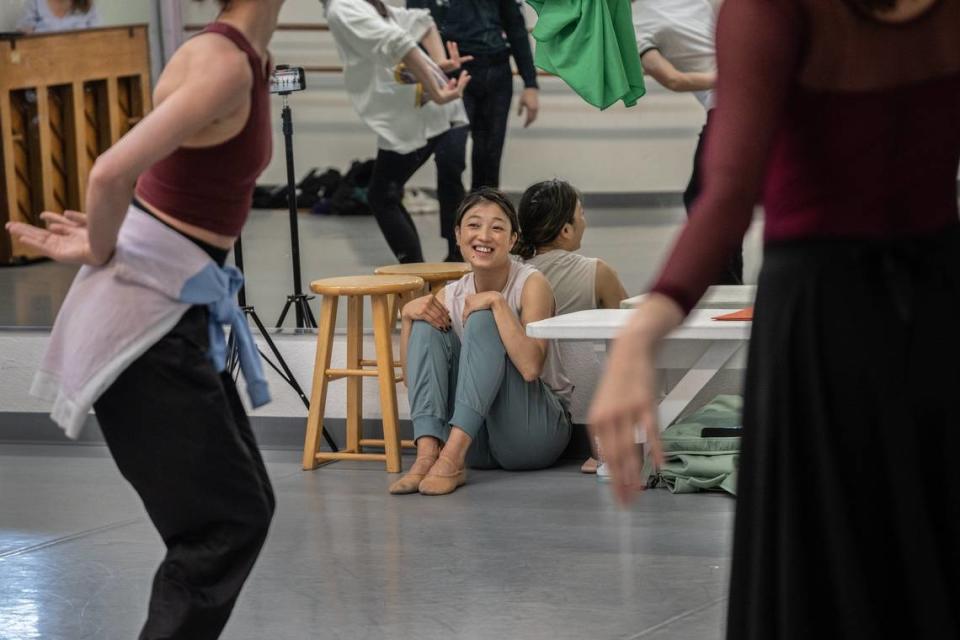
“I reached out to say ‘Hey, I’m putting on a sensory-friendly ballet show, do you want to partner?’” Cunningham said.
The Kings not only agreed but helped set up ticketing and spread the word to families and communities they had served during their Autism Night.
“Families were thanking us from the moment they walked in,” Cunningham said. “They said ‘I have never been able to feel comfortable to walk in a space before or attend an event here before; I haven’t been able to take my child to a performing arts event because I’m afraid of how the audience around me will react.’”
The project grew over two years through a partnership with the Crocker Art Museum, as well as a California Arts Council grant, which allowed Sensory Friendly Dance to offer a six-week summer course of introductory sensory-friendly dance classes.
Higashiyama, the choreographer, called the show a “great opportunity” to bring ballet to more people, especially those who have never stepped into a theater.
Higashiyama said she chose to base her work on the legend of Tanabata, a Japanese Star Festival celebrated annually on July 7, hoping it would encourage audience members to attend the festival, which is just a couple of weeks after the performance.
“It was perfect timing,” she said.
When she performed in last year’s “Peter Rabbit,” Higashiyama said she enjoyed seeing the reactions of the children from the stage. She believed all kids should have access to the joys of dancing, the beauty of ballet and the overall theater experience.
“I try to make it simple enough that it’s easy enough for them to understand,” she said. “I just want to see a smile on their face and, if we can, inspire them to dance.”
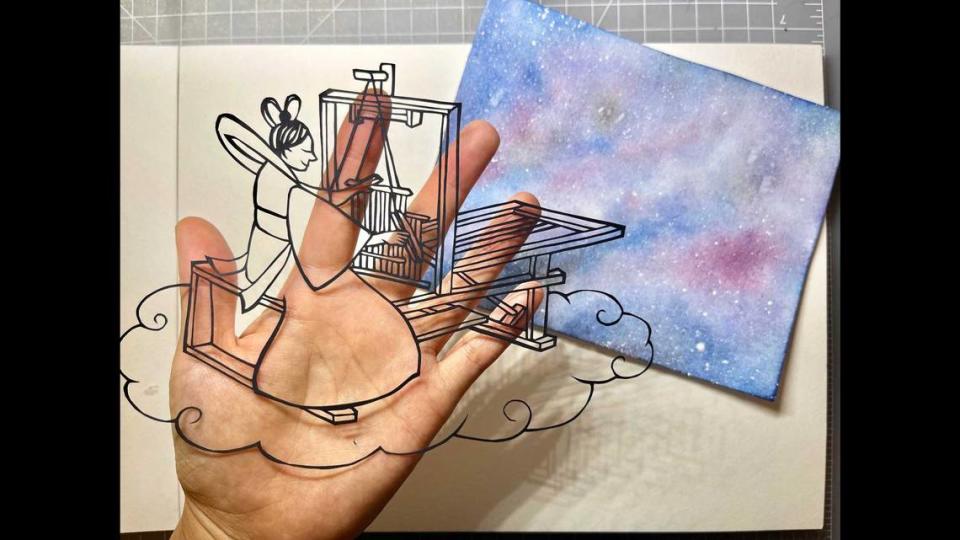
Jaime Orrego, who has been involved with Sensory Friendly Dance since its inaugural performance, created an entirely original, handmade costume ensemble.
Emi Mizuno said she hadn’t planned on working this summer when Higashiyama invited her to create the set designs but agreed to help because the Japanese tale of Tanabata had never been made into a ballet before.
“I think this is maybe the first time this story was made into a ballet,” Mizuno said. “I’ve never seen a ballet-version of this story, so I’m excited to see it.”
This was Mizuno’s first time designing sets for Sensory Friendly Dance and said the adjustment in lighting for a sensory-friendly performance influenced her approach.
“They said they couldn’t turn off the lights to the audience, but that makes the room really bright, which makes it hard to see the background,” Mizuno said.

As the dancers perform on stage, the silhouette of their shadows become a lively part of the watercolor background. Because the house lights will be left on during the production, Mizuno has opted to use darker watercolors and adjust the position of the lighting to bring her set to life.
Arts like ballet are often perceived as something reserved for older, more mature audiences, Mizuno said, and children who can be louder “are often not allowed in that kind of space.”
“Ballet is such a comprehensive art. It’s a collaboration of dance, visual art, costume, music, lighting, storytelling — pretty much all kinds of art except for literal words,” Mizuno said. “Ballet doesn’t have words, but instead it speaks to our senses.”

